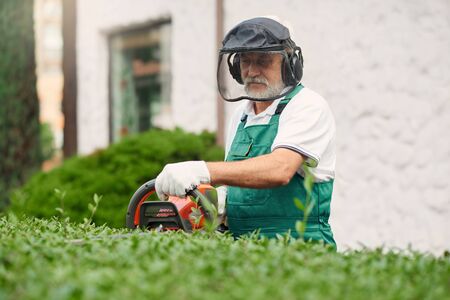1. Why Compost? The Benefits for Your Backyard and Community
Composting isn’t just for people with big gardens or lots of land. Even if you only have a small backyard, a patio, or just a balcony, composting is possible—and it can make a big difference. Let’s take a look at why composting is such a great idea, especially for folks living in urban areas or small spaces.
Environmental Benefits
When you compost, you’re helping the planet. Food scraps and yard waste make up more than 28% of what we throw away in the U.S., and most of this ends up in landfills where it creates methane—a powerful greenhouse gas. By composting at home, you keep these materials out of landfills and reduce your carbon footprint.
| Benefit | How It Helps |
|---|---|
| Reduces landfill waste | Keeps food scraps and yard waste out of trash cans |
| Cuts greenhouse gases | Prevents methane from forming in landfills |
| Saves energy | Less waste means fewer garbage trucks on the road |
Gardening Benefits—Even in Small Spaces
Compost is often called “black gold” by gardeners for good reason. Adding compost to your soil helps it hold water, gives plants the nutrients they need, and makes your garden beds healthier. And don’t worry—you don’t need a big backyard! Even container gardens and raised beds can benefit from homemade compost.
- Improves soil quality: Compost adds important nutrients and helps soil stay loose and healthy.
- Makes plants stronger: Healthier soil means less disease and better growth—even in pots or window boxes.
- Saves money: You’ll buy less fertilizer and potting soil when you use your own compost.
Community Connections and Local Impact
Backyard composting is about more than just what happens in your own space—it can also help build community. Some neighborhoods share compost bins or trade finished compost for fresh produce. Getting involved with local composting efforts can help neighbors connect, reduce city waste costs, and create greener blocks.
- Neighborhood projects: Shared bins or drop-off sites let even apartment dwellers participate.
- Beautifies communities: Compost helps grow flowers and trees that everyone can enjoy.
- Cuts city costs: Less trash means lower collection and landfill fees for everyone.
The Takeaway: Small Space, Big Impact!
No matter how little outdoor space you have, starting a backyard compost pile—or even a bin on your balcony—can help your plants, your neighborhood, and the environment. In the next section, we’ll look at the basics of getting started with small-space composting so you can make it work wherever you live.
2. Choosing the Right Composting Method for Small Spaces
When you have a small backyard, balcony, or patio, traditional compost piles usually aren’t an option. Luckily, there are several compact composting methods that fit neatly into tight spots and work well for American homes with limited outdoor space. Let’s compare three of the most popular choices: worm bins (vermicomposting), tumbler bins, and bokashi systems.
Comparing Popular Small-Space Composting Options
| Method | How It Works | Best For | Space Needed | What You Can Compost | Maintenance Level |
|---|---|---|---|---|---|
| Worm Bins (Vermicomposting) | Red wiggler worms break down kitchen scraps in a bin. | Apartments, condos, patios, garages | 1-2 sq ft (fits under sinks or on balconies) | Fruit & veggie scraps, coffee grounds, eggshells (no meat/dairy) | Low to moderate—feed weekly, keep bedding moist |
| Tumbler Bins | Rotating sealed bin mixes materials for faster composting. | Tiny yards, patios, decks | About 3-5 sq ft (some models are compact and upright) | Lawn clippings, leaves, fruit & veggie scraps | Moderate—turn every few days for best results |
| Bokashi Systems | Airtight bucket ferments all food waste using a special bran. | Kitchens, garages, balconies (even indoors) | Fits under sinks or in closets (about 1 sq ft) | Almost all food scraps—including meat & dairy! | Low—add scraps & bran until full, then let ferment |
The Details: Pros and Cons for Each Method
Worm Bins (Vermicomposting)
Pros: Super compact; produces rich worm castings for plants; no bad smells if managed well.
Cons: Worms need specific care; can’t handle lots of citrus or spicy foods; sensitive to temperature extremes.
Tumbler Bins
Pros: Easy to turn and aerate; keeps pests out; works faster than traditional piles.
Cons: Needs some outdoor space; may not be suitable for apartments without balconies or patios; can be heavy when full.
Bokashi Systems
Pros: Handles ALL kitchen scraps—even bones and cheese; fits almost anywhere; very little odor.
Cons: Finished product needs to be buried or added to another compost system; requires purchase of bokashi bran.
What’s Best for Your Space?
If you live in an apartment or have just a tiny balcony or patio, worm bins and bokashi systems are top picks. They’re both easy to tuck away and manage indoors or outside. If you have a small backyard or deck with a bit more room, a tumbler bin offers fast results and is simple to use. Choose the method that fits your lifestyle and available space best—and remember, even a little composting goes a long way toward greener living!

3. Setting Up Your Composting Space: Tips and Tricks
Composting in a small backyard doesn’t have to be a hassle. With the right setup, you can create nutrient-rich compost without taking over your entire outdoor area. Here are some practical tips for preparing your composting spot so it fits seamlessly into American suburban or urban lifestyles.
Choosing the Right Location
Find a spot that’s convenient but not in the way. You want easy access from your kitchen, but you don’t want your compost bin right next to your outdoor seating area. Here’s what to consider:
| Location Factor | Why It Matters | Tips |
|---|---|---|
| Away from House | Keeps odors and bugs at bay | Place 10-20 feet from doors/windows |
| Partial Shade | Prevents drying out or overheating | Under a tree or on the north side of a fence works well |
| Flat Surface | Makes turning and managing easier | Avoid slopes; use pavers if needed for stability |
| Drainage | Excess water can cause issues | Avoid low spots where water collects after rain |
Managing Odors and Pests
No one wants a stinky backyard or uninvited critters. With these simple tricks, you can keep smells down and pests away:
- Cover food scraps: Always add a layer of dry leaves or shredded newspaper on top of kitchen waste.
- Avoid meat & dairy: Stick with fruit, veggies, coffee grounds, and eggshells.
- Use a bin with a lid: This helps contain smells and keeps animals out.
- Add air: Turning your pile once a week speeds decomposition and reduces odors.
- If it smells bad: Add more “browns” (dry materials like leaves) and turn the pile to improve airflow.
Keeping Things Tidy in Small Spaces
You don’t need to sacrifice style or neatness for great compost. Here’s how you can keep everything looking sharp:
- Select a compact bin: Tumblers or stackable bins are perfect for tight spots and look tidy.
- Create a designated zone: Use pavers, stones, or even a decorative screen to define your compost area.
- Hide with plants: Tall grasses, shrubs, or lattice panels can help blend your bin into the landscape.
- Sweep regularly: Keep fallen leaves and debris picked up for a clean look.
- Add signage: A fun DIY sign can make the space inviting and remind family members what goes in the bin!
Quick Reference: What Belongs in Your Compost?
| Yes (Add These) | No (Skip These) |
|---|---|
| Fruit & veggie scraps Coffee grounds Eggshells Dried leaves Torn cardboard Lawn clippings (untreated) |
Dairy products Meat/fish Bones PET waste Treated wood Synthetic materials/plastics |
Your Small Space Compost Setup Can Work!
With these easy steps, you’ll have an efficient compost system that fits right into your lifestyle—helping your garden thrive while keeping things neat and neighbor-friendly.
4. What to Compost (and What to Skip): Creating Healthy, Balanced Compost
When you’re composting in a small backyard or even on a balcony, it’s important to be smart about what you add to your pile or bin. The right mix will help everything break down quickly and prevent bad smells or pests—two things nobody wants near their living space!
What You Can Compost: Greens and Browns
Compost needs a balance of “greens” (things high in nitrogen) and “browns” (things high in carbon). Here are some common items you can safely compost even if you have limited space:
| Greens (Nitrogen-rich) | Browns (Carbon-rich) |
|---|---|
| Coffee grounds & filters | Dry leaves |
| Fruit & veggie scraps | Shredded newspaper |
| Tea bags (no staples) | Paper towels (unbleached, no chemicals) |
| Eggshells (crushed) | Cardboard (shredded, plain only) |
| Grass clippings (in thin layers) | Sawdust from untreated wood |
What Not to Compost in Small Spaces
Some items can cause odor problems, attract animals, or make composting harder when space is tight. Here’s what you should skip:
- Dairy, meat, fish, and bones – They smell bad as they decompose and attract pests.
- Oily or greasy foods – Slow to break down and can cause odors.
- PET waste (cat or dog poop) – Contains pathogens unsafe for home compost.
- Treated or glossy paper/cardboard – May contain inks or chemicals not good for your soil.
- Synthetic materials – Plastics, rubber bands, twist ties, etc., never break down.
- Sick plants or weeds with seeds – Can spread disease or unwanted plants when you use your compost.
Tips for Healthy Compost in Tight Spaces
- Chop it up: Smaller pieces break down faster. Cut kitchen scraps and tear up paper before adding them.
- Avoid too much of one thing: If you add lots of the same item at once (like grass), it can get slimy. Mix it up!
- Add browns regularly: Kitchen scraps are usually wet and green—add dry browns like shredded paper often to keep things balanced.
- Aerate: Turn your pile every week with a small garden fork or hand tool so it gets enough air and doesn’t smell sour.
- Keep it moist but not soggy: Your compost should feel like a wrung-out sponge. Too wet? Add more dry browns. Too dry? Mist lightly with water.
Quick Reference: What Goes Where?
| Add to Compost Bin | Avoid Adding |
|---|---|
| Coffee grounds, veggie peels, eggshells, yard trimmings | Dairy, meat, pet waste, synthetic materials, treated wood/paper |
With these simple guidelines, you’ll be able to keep your small-space compost healthy and productive—turning everyday kitchen scraps into valuable garden gold!
5. Troubleshooting Common Challenges in Small-Space Composting
Dealing with Pests
Pests like raccoons, rats, and even neighborhood pets can be attracted to compost bins, especially in small backyards or apartment patios. To keep pests out:
- Use a sealed bin: Choose a compost bin with a tight-fitting lid and small ventilation holes.
- Avoid meat & dairy: Only add plant-based scraps—never meat, dairy, or oily foods that attract animals.
- Bury food scraps: Always cover new food waste with a layer of dry leaves, shredded newspaper, or finished compost.
Fixing Slow Decomposition
If your compost isn’t breaking down as quickly as you’d like, try these quick fixes:
| Problem | Solution |
|---|---|
| Compost too dry | Add water until it feels like a wrung-out sponge. |
| Compost too wet | Add more dry materials (leaves, shredded paper) and mix well. |
| Lack of air | Turn the pile weekly to introduce oxygen. |
| Large pieces not breaking down | Chop or shred materials into smaller bits before adding. |
Keeping Neighbors Happy
Composting in close quarters means being considerate of those nearby. Here’s how to avoid issues:
- Control odors: Never let food scraps sit uncovered. Mix in browns (dry leaves, cardboard) every time you add greens (food waste).
- Choose the right location: Place your bin away from property lines and windows if possible.
- Keep it tidy: Wipe up spills and keep the area around your compost bin clean to deter flies and critters.
Using Finished Compost Effectively in Small Gardens
Your finished compost is garden gold! Here’s how to use it in limited spaces:
- Container gardens: Mix 1 part compost with 2 parts potting soil for healthy potted plants.
- Raised beds or small plots: Spread a thin layer (about ½ inch) over the soil each season and gently mix in.
- Potted herbs and veggies: Top-dress with a handful of compost every few months for an organic boost.
- Lawn patches or flower pots: Sprinkle compost around plants to improve soil structure and moisture retention.


